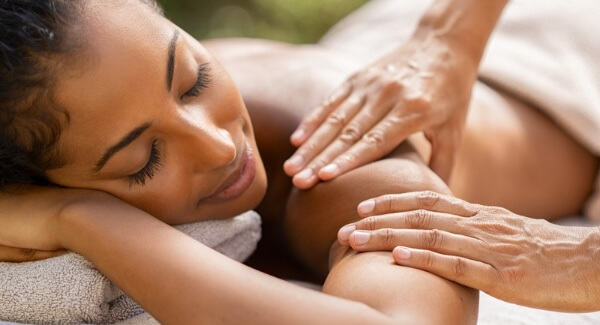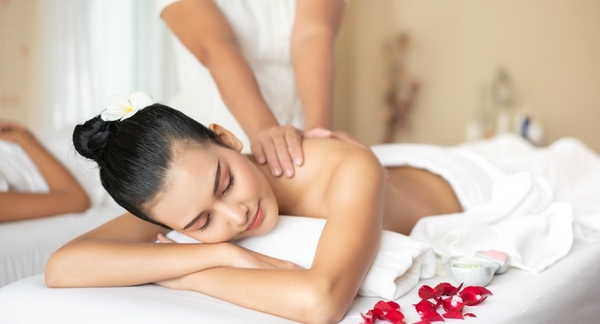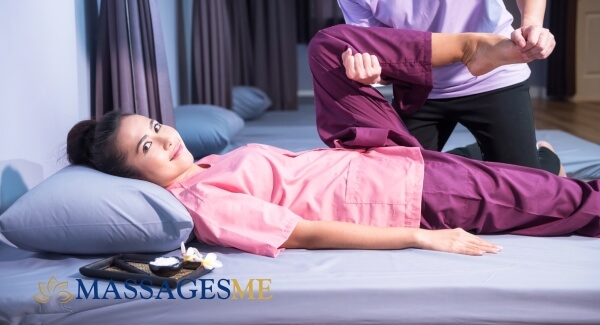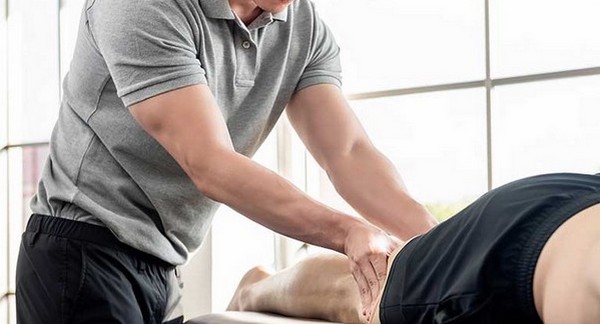A Guide to How Thai Massage Techniques Can Correct Postural Issues
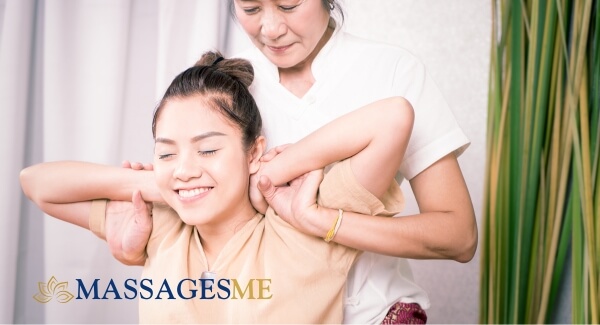
Poor posture has become epidemic in modern society. Hours spent hunched over computers, looking down at mobile phones, sitting in cars, and collapsing into sofas create characteristic patterns of misalignment that affect millions of people. The consequences extend far beyond aesthetics: chronic pain, restricted breathing, digestive problems, reduced energy, and accelerated wear on joints all stem from postural dysfunction.
Whilst many people recognise their posture needs improvement, conventional solutions often prove inadequate. Being told to "sit up straight" rarely produces lasting change because postural problems involve complex patterns of muscle imbalance, restricted joint mobility, and ingrained movement habits that conscious effort alone cannot overcome.
Thai massage offers a comprehensive approach to postural correction that addresses the multiple dimensions of alignment problems simultaneously. Through its unique combination of assisted stretching, targeted muscle release, joint mobilisation, and body awareness cultivation, Thai massage doesn't merely remind you to stand tall; it creates the physical conditions that make good posture natural and sustainable.
This article explores how Thai massage techniques correct common postural issues, examining the mechanisms through which it restores alignment, the specific problems it addresses, and practical guidance for using this ancient practice to achieve lasting postural improvements.
Understanding Posture: More Than Just Standing Straight
Before exploring how Thai massage corrects postural problems, it's helpful to understand what good posture actually means and why it matters so profoundly for health and well-being.
Posture refers to the alignment of body segments relative to one another and to gravity, both in static positions (standing, sitting) and during movement (walking, reaching, bending). Optimal posture distributes gravitational forces efficiently through the skeletal system, minimising muscular effort required to maintain position and allowing free, unrestricted movement.
The Characteristics of Good Posture
Proper alignment involves several key features:
Neutral spinal curves: The spine has natural curves (cervical lordosis in the neck, thoracic kyphosis in the upper back, lumbar lordosis in the lower back) that provide shock absorption and distribute loads. Good posture maintains these curves without exaggeration or flattening.
Balanced muscle tension: Opposing muscle groups maintain equal tension, with neither side chronically tight or weak. The front and back of the body balance each other, as do the left and right sides.
Aligned joints: Major joints stack vertically when viewed from the side: ankle, knee, hip, shoulder, and ear form a relatively straight line. When viewed from behind, the body appears symmetrical.
Effortless maintenance: Proper posture requires minimal muscular effort to sustain. The skeleton bears weight; muscles maintain position with light, constant activity rather than chronic contraction.
Breathing freedom: Good alignment allows the ribcage to expand fully, permitting deep, efficient breathing.
Common Postural Deviations
Modern lifestyles create characteristic patterns of misalignment:
Forward head posture: The head juts forward, increasing strain on neck muscles and compressing cervical vertebrae. This often accompanies desk work and mobile phone use.
Rounded shoulders: The shoulder blades pull forward and away from the spine, with chest muscles shortened and upper back muscles overstretched. This posture restricts breathing and creates neck and shoulder pain.
Excessive thoracic kyphosis: The upper back becomes excessively rounded, often combined with forward head and rounded shoulders. This "hunchback" posture becomes increasingly common with age and sedentary habits.
Anterior pelvic tilt: The pelvis tilts forward, exaggerating the lumbar curve and creating a "swayback" appearance. This often accompanies tight hip flexors and weak abdominal muscles.
Posterior pelvic tilt: The pelvis tilts backward, flattening the lumbar curve. This often results from tight hamstrings and gluteal muscles combined with weak back extensors.
Lateral shifts and rotations: One shoulder higher than the other, one hip forward of the other, or spinal rotation creates asymmetrical loading and compensatory patterns.
The Consequences of Poor Posture
Postural dysfunction creates multiple problems:
- Chronic pain: Misalignment creates abnormal mechanical stress, leading to pain in the neck, shoulders, back, and hips.
- Reduced mobility: Poor posture restricts joint range of motion and creates stiffness.
- Breathing restriction: Collapsed chest position limits lung expansion and reduces oxygen intake.
- Digestive problems: Compressed abdominal organs function less efficiently.
- Fatigue: Maintaining poor posture requires excessive muscular effort, creating constant energy drain.
- Accelerated degeneration: Abnormal joint loading accelerates wear, contributing to arthritis and disc problems.
- Reduced confidence: Slumped posture affects how others perceive us and how we feel about ourselves.
How Thai Massage Corrects Postural Problems
Thai massage addresses postural dysfunction through multiple complementary mechanisms that work together to restore natural alignment.
Alignment Restoration Through Stretching and Mobilisation
The cornerstone of Thai massage's postural benefits is its extensive use of assisted stretching and joint mobilisation. These techniques directly address the muscle shortening and joint restrictions that maintain poor posture.
Lengthening shortened muscles: Poor posture involves characteristic patterns of muscle tightness. Thai massage systematically stretches these areas:
For forward head posture and rounded shoulders:
- Chest muscle stretches (pectorals) that have shortened from hunched positions
- Anterior shoulder stretches opening the front of the shoulder joint
- Neck flexor stretches addressing forward head position
- Upper trapezius stretches, releasing chronic shoulder elevation
For anterior pelvic tilt and excessive lumbar curve:
- Hip flexor stretches (psoas, rectus femoris) that become tight from prolonged sitting
- Quadriceps stretches addressing thigh tightness that pulls on the pelvis
- Lower back stretches that release compensatory tension
For posterior pelvic tilt and flattened lumbar curve:
- Hamstring stretches addressing posterior chain tightness
- Gluteal stretches releasing hip extensors
- Stretches that restore lumbar extension capacity
Mobilising restricted joints: Poor posture restricts joint mobility, which then perpetuates misalignment. Thai massage employs gentle traction and movement through the full range of motion to restore joint function:
- Spinal mobilisation restoring movement between vertebrae
- Shoulder joint mobilisation addressing restrictions from rounded posture
- Hip mobilisation releasing restrictions that affect pelvic position
- Ribcage mobilisation improving breathing mechanics
Creating space: As muscles lengthen and joints mobilise, physical space opens within the body. Compressed vertebrae decompress, restricted joints gain freedom, and the body can more easily assume proper alignment.
Muscle Tension Release and Rebalancing
Chronic muscle tension maintains postural dysfunction even when conscious effort attempts correction. Thai massage releases this holding through multiple approaches:
Targeted acupressure: Applying focused pressure to chronically tight muscles and trigger points releases tension that pulls the body out of alignment. Key areas include:
- Suboccipital muscles at the skull base (maintaining forward head)
- Upper trapezius and levator scapulae (elevating shoulders)
- Pectoral muscles (pulling shoulders forward)
- Hip flexors (tilting pelvis anteriorly)
- Erector spinae (creating excessive lumbar curve or protective guarding)
Work along Sen lines: The energetic framework of Thai massage provides a systematic approach to releasing tension patterns. Sen lines that particularly relate to posture include:
- Sen Sumana (the central line addressing spinal alignment)
- Sen Ittha and Sen Pingkhala (parallel to the spine, affecting back muscle balance)
- Sen Kalathari (branching to shoulders and limbs, addressing peripheral alignment)
Rhythmic compression and rocking: These techniques calm the nervous system, allowing protective muscle guarding to release. When the body feels safe, it naturally releases unnecessary tension.
Rebalancing opposing muscle groups: Poor posture involves imbalances between opposing muscles (one side tight, the opposing side overstretched and weak). Thai massage addresses both sides:
- Releasing chronically tight muscles that pull the body out of alignment
- Stretching and activating overstretched muscles that have become weak
- Restoring balanced tension that supports proper positioning
Flexibility and Mobility Enhancement
Restricted flexibility severely limits postural improvement. Tight tissues physically prevent proper alignment, no matter how much conscious effort is applied. Thai massage systematically improves flexibility through:
Progressive stretching: Regular sessions gradually increase tissue extensibility, allowing a greater range of motion and easier maintenance of proper posture.
Fascial release: The connective tissue network (fascia) can become dense and adhered, restricting movement. Thai massage's combination of pressure and stretching restores fascial glide and suppleness.
Increased joint range: As joint mobility improves, the body can more easily achieve and maintain aligned positions.
Functional movement patterns: Thai massage moves the body through complex, integrated patterns that train coordinated movement rather than isolated muscle actions.
Core Stability and Support
Good posture requires adequate core strength to support the spine and pelvis. Whilst Thai massage is primarily a passive treatment, it contributes to core function through several mechanisms:
Activation through positioning: Many Thai massage stretches require core engagement to maintain position. This gentle, sustained activation helps strengthen deep stabilising muscles.
Breathing emphasis: Thai massage's focus on coordinated breathing strengthens the diaphragm and transverse abdominis (deep abdominal muscles), key core stabilisers.
Postural awareness: As alignment improves during treatment, recipients experience what proper posture feels like, developing the body awareness necessary to engage appropriate muscles.
Foundation for active strengthening: By releasing restrictions and restoring mobility, Thai massage creates the conditions for effective strengthening exercises between sessions.
Body Awareness and Neuromuscular Re-education
Perhaps the most overlooked aspect of postural correction is body awareness. Many people have lost an accurate perception of their body position; they believe they're standing straight when, in fact, they are significantly misaligned.
Thai massage cultivates body awareness through:
Experiencing proper alignment: During treatment, therapists guide recipients into correct positions. This provides direct experience of what good posture feels like, creating a reference point for self-correction.
Attention to sensation: The practice's meditative quality encourages awareness of bodily sensations, helping recipients notice postural habits and tension patterns.
Proprioceptive input: The stretching, pressure, and movement provide rich sensory information that enhances the brain's understanding of body position and movement.
Breaking habitual patterns: By moving the body in novel ways, Thai massage interrupts ingrained postural habits, creating opportunities for new patterns to develop.
Addressing Specific Postural Problems
Different postural deviations require targeted approaches. Thai massage can be adapted to address particular patterns of misalignment.
Forward Head Posture and Tech Neck
Modern device use has created epidemic levels of forward head posture, where the head juts forward of the shoulders, creating enormous strain on neck structures.
Thai massage addresses this through:
- Deep stretches of chest and anterior shoulder muscles that pull the head forward
- Release of suboccipital muscles that work overtime to hold the head up
- Mobilisation of cervical vertebrae to restore proper neck alignment
- Upper back work to counteract a rounded thoracic spine
- Stretches that restore the natural cervical curve
Self-care integration: Therapists often provide guidance on ergonomics, screen height adjustment, and simple stretches to maintain improvements between sessions.
Rounded Shoulders and Upper Crossed Syndrome
This common pattern involves tight chest and weak upper back muscles, creating the characteristic "slouched" appearance.
Thai massage techniques include:
- Extensive chest opening stretches (doorway stretch variations, arm position stretches)
- Release of pectoral muscles and anterior shoulder structures
- Work on the upper trapezius and levator scapulae that become overactive
- Strengthening activation of rhomboids and middle trapezius through positioning
- Shoulder blade mobilisation to restore proper scapular position
Progressive correction: This pattern often develops over years and requires consistent treatment to reverse. Regular sessions progressively open the chest and retrain muscle balance.
Lower Crossed Syndrome and Pelvic Tilt
This pattern involves tight hip flexors and lower back muscles combined with weak abdominals and gluteals, creating anterior pelvic tilt and excessive lumbar curve.
Treatment focuses on:
- Deep hip flexor stretches (psoas, rectus femoris, tensor fasciae latae)
- Quadriceps stretches that release anterior thigh tightness
- Lower back release to reduce compensatory tension
- Hamstring and gluteal work to restore posterior chain function
- Abdominal engagement through breathing and positioning
Lifestyle factors: This pattern often relates to prolonged sitting. Therapists may discuss workstation setup, regular movement breaks, and complementary exercises.
Lateral Imbalances and Asymmetries
Many people develop asymmetrical patterns: one shoulder higher, one hip forward, habitual weight-bearing on one leg.
Thai massage addresses these through:
- Detailed assessment of left-right differences
- Targeted work on the tighter, shorter side
- Mobilisation of restricted areas
- Stretching that restores symmetry
- Awareness training to recognise and correct habitual patterns
Identifying causes: Asymmetries often relate to handedness, occupational demands, or compensations for old injuries. Understanding the cause helps prevent recurrence.
Age-Related Postural Changes
As people age, characteristic postural changes often develop: increased thoracic kyphosis (upper back rounding), forward head, and reduced spinal curves.
Thai massage can slow or reverse these changes through:
- Gentle spinal extension work to counteract forward flexion bias
- Chest opening to reverse rounded upper back
- Hip and leg flexibility work to maintain an upright stance
- Balance and proprioception enhancement
- Modified intensity appropriate for older bodies
Prevention emphasis: Regular Thai massage throughout life can prevent many age-related postural deteriorations.
Supporting Physical and Mental Wellness Through Posture
Improving posture creates benefits that extend far beyond appearance, significantly enhancing overall health and quality of life.
Pain Reduction
Many chronic pain conditions directly relate to postural dysfunction. As alignment improves:
Neck and shoulder pain decreases: Proper head and shoulder position dramatically reduces strain on these areas.
Back pain resolves: When the spine maintains natural curves and balanced muscle tension, mechanical stress decreases and pain often resolves.
Headaches reduce: Many tension headaches stem from neck and shoulder misalignment; correcting posture addresses the source.
Hip and knee stress lessens: Proper pelvic alignment reduces abnormal loading on lower limb joints.
Enhanced Breathing and Energy
Postural improvement profoundly affects respiratory function:
Increased lung capacity: Open chest position allows complete ribcage expansion and deeper breathing.
Improved oxygen delivery: Better breathing means more oxygen reaches tissues, enhancing energy and cognitive function.
Reduced fatigue: Proper alignment requires less muscular effort to maintain, conserving energy throughout the day.
Better stress resilience: Deep breathing capacity supports nervous system regulation and stress management.
Digestive and Organ Function
Upright posture creates proper space for internal organs:
Improved digestion: Organs have adequate room to function optimally rather than being compressed.
Better circulation: Proper alignment supports healthy blood and lymph flow.
Enhanced elimination: Intestinal function improves when not compressed by poor posture.
Psychological and Emotional Benefits
The mind-body connection means posture affects mental state:
Increased confidence: Standing tall influences how others perceive us and how we feel about ourselves.
Improved mood: Research shows that upright posture enhances positive emotions and reduces negative ones.
Reduced anxiety: Open chest position supports deeper breathing, which calms anxiety.
Enhanced presence: Good posture facilitates being present and engaged rather than collapsed and withdrawn.
Injury Prevention and Athletic Performance
For active individuals, proper alignment reduces injury risk and enhances performance:
Better movement efficiency: Aligned joints move through optimal paths, reducing wear and energy expenditure.
Improved force transfer: Power generated in the core transfers effectively through properly aligned limbs.
Reduced compensation patterns: Good posture prevents the asymmetrical loading that leads to overuse injuries.
Enhanced body awareness: The proprioceptive benefits support coordinated, skilful movement.
Scientific Evidence and Clinical Experience
Research and clinical practice increasingly support Thai massage's postural benefits:
Documented improvements: Studies measuring postural angles before and after Thai massage courses show significant improvements in head position, shoulder alignment, and spinal curves.
Functional gains: Research participants report improved daily function, reduced pain, and enhanced quality of life alongside objective postural measurements.
Sustained benefits: Studies tracking participants over weeks and months find that postural improvements persist, particularly with regular maintenance sessions.
Practitioner reports: Therapists consistently observe postural changes in clients receiving regular treatment, often noting improvements that clients themselves hadn't consciously noticed.
Mechanism validation: Research confirms that Thai massage improves flexibility, releases muscle tension, and enhances body awareness, all mechanisms central to postural correction.
Practical Guidance for Postural Improvement
To maximise Thai massage's postural benefits, several practical considerations enhance outcomes.
Finding Qualified Practitioners
Postural correction requires skilled therapists who:
- Understand posture and biomechanics: Knowledge of postural patterns, muscle imbalances, and movement mechanics ensures appropriate treatment.
- Can assess individual patterns: Skilled practitioners identify your specific postural deviations and tailor treatment accordingly.
- Provide education: The best therapists explain your postural issues and offer practical guidance for maintaining improvements.
- Work progressively: They understand that postural change happens gradually and adjust treatment as your body responds.
For those seeking practitioners experienced in postural work, you can find Thai massage therapists in the UK who specialise in alignment and postural correction.
Session Logistics and What to Expect
Setting: Thai massage occurs on a padded mat on the floor, allowing therapists to use body weight effectively and move freely around you.
Clothing: Wear loose, comfortable clothing that allows free movement (similar to yoga attire). Avoid restrictive garments.
Duration: Sessions typically last 60-90 minutes, providing sufficient time to address the full body systematically.
Frequency: For postural correction, weekly sessions for 6-8 weeks establish initial improvements. Maintenance sessions, held every 2-4 weeks, help sustain gains.
Communication: Discuss your postural concerns before treatment. During sessions, provide feedback about stretches and pressure. Ask questions about what you're experiencing.
Between-Session Self-Care
Thai massage works best when integrated with self-care practices:
Awareness practice: Throughout the day, notice your posture. When you catch yourself slouching, gently correct your position.
Simple stretches: Your therapist can teach key stretches to maintain gains between sessions.
Ergonomic improvements: Adjust workstation height, screen position, and chair support to encourage better posture.
Movement breaks: Set reminders to stand, stretch, and move every 30-60 minutes during sedentary activities.
Strengthening exercises: Complement Thai massage with appropriate core and postural strengthening exercises.
Realistic Expectations and Timelines
Gradual change: Postural patterns developed over years don't resolve instantly. Commit to a course of treatment for meaningful improvement.
Variable response: Some people experience dramatic early improvements; others change more gradually. Both patterns are normal.
Active participation: Whilst Thai massage is passive during sessions, maintaining improvements requires awareness and self-care between treatments.
Lifestyle factors: Addressing the habits that created poor posture (prolonged sitting, device use, stress) supports lasting change.
Ongoing maintenance: Even after significant improvement, occasional sessions maintain gains and prevent regression.
Integration with Other Approaches
Thai massage works synergistically with complementary practices:
Yoga and Pilates: These practices build strength and flexibility that support postural improvements.
Physiotherapy: For significant postural problems, coordination with physiotherapists enhances outcomes.
Chiropractic care: Some people benefit from combining Thai massage's soft tissue work with chiropractic joint adjustments.
Alexander Technique or Feldenkrais: These movement education methods complement the body awareness benefits of Thai massage.
Strength training: Appropriate resistance exercise builds the muscular support necessary for maintaining good posture.
Conclusion: Standing Tall Through Ancient Wisdom
Poor posture has become so common in modern life that many people accept chronic pain, restricted breathing, and diminished vitality as normal. Yet proper alignment remains not only possible but natural when the body receives appropriate support in restoring balance.
Thai massage offers a comprehensive approach to postural correction that addresses the multiple dimensions of alignment problems simultaneously. Through assisted stretching, targeted muscle release, joint mobilisation, and body awareness cultivation, it creates the physical and neurological conditions that allow good posture to emerge naturally rather than requiring constant conscious effort.
The benefits extend far beyond appearance. Proper alignment reduces pain, enhances breathing and energy, supports organ function, improves confidence and mood, and enables more efficient, injury-resistant movement. These improvements accumulate over time, building not merely better posture but enhanced overall health and quality of life.
For those struggling with chronic pain, restricted movement, or simply the physical consequences of modern sedentary lifestyles, Thai massage provides an evidence-supported, non-invasive path toward better alignment and all the benefits it brings. The journey begins with that first session and continues through a committed engagement with this ancient practice, integrating its principles into daily life.
Standing tall isn't merely about aesthetics or following social conventions; it's about allowing your body to function as nature intended, free from the restrictions and compensations that limit vitality and well-being. Thai massage offers the tools to reclaim that natural state, one session at a time.
Search Massage Therapists Near You.
More From Our Blog
Latest Blogs
Post-Thai Massage Care: Tips for Maximizing the Benefits After Your Session
Thai Massage for Beginners: Answering Common Questions for Your First Session
Choosing the Right Thai Massage Therapist: What to Look for in a Qualified Professional
Post-Thai Massage Care: Tips for Maximising the Benefits After Your Session
Preparing for Your Thai Massage: Tips on What to Wear and How to Get Ready
How to Talk to Your Therapist for the Best Thai Massage Experience
What to Expect During a Traditional Thai Massage Session
A Guide to How Thai Massage Techniques Can Correct Postural Issues
How Thai Massage Can Help with Back Pain, Headaches, and Sciatica
The Mental and Emotional Benefits of a Thai Massage Session
View All Blogs
Advertise with Massages Me and Grow Your Business!
We are the leading massage platform for massage therapists in London and across the UK covering all of England, Scotland, Wales and Northern Ireland. Our aim is to promote individual therapists and venues in the UK, and help professional and casual body workers providing therapeutic and relaxing massages to expand their businesses and build desirable client base.
We provide a friendly and reliable online advertising platform for qualified Masseuses, students, and salons to connect with potential clients looking for relaxing and therapeutic massages - onsite and offsite mobile services across the UK.
Are you looking to meet more customers? Get your profile listed and start getting bookings today!
